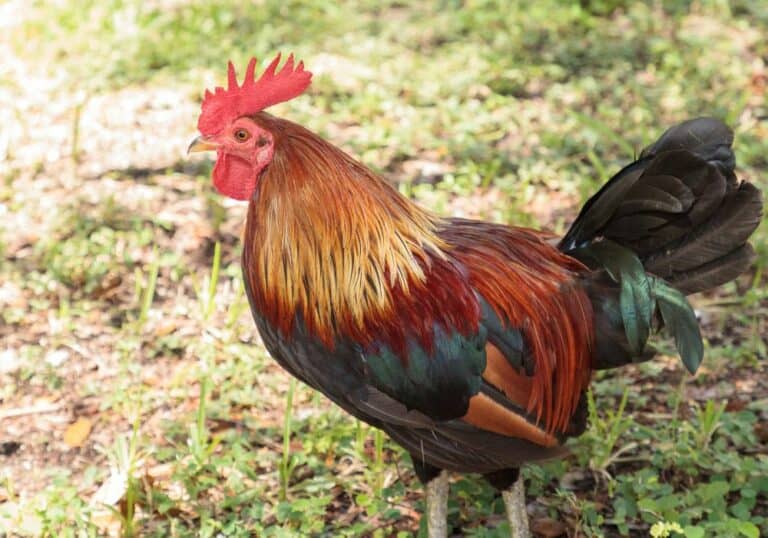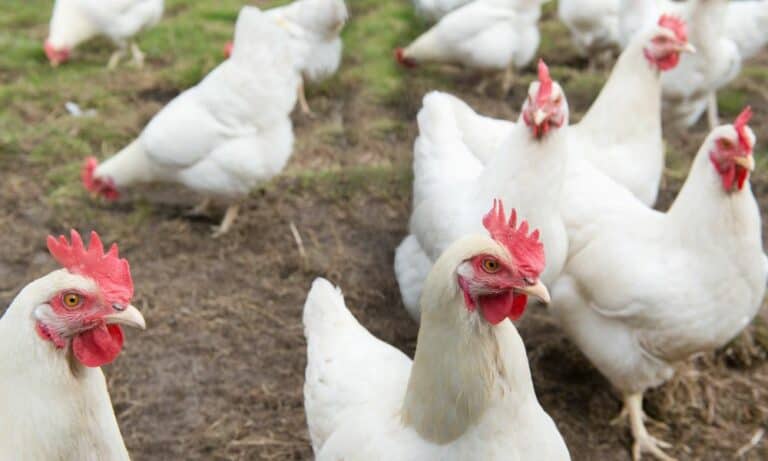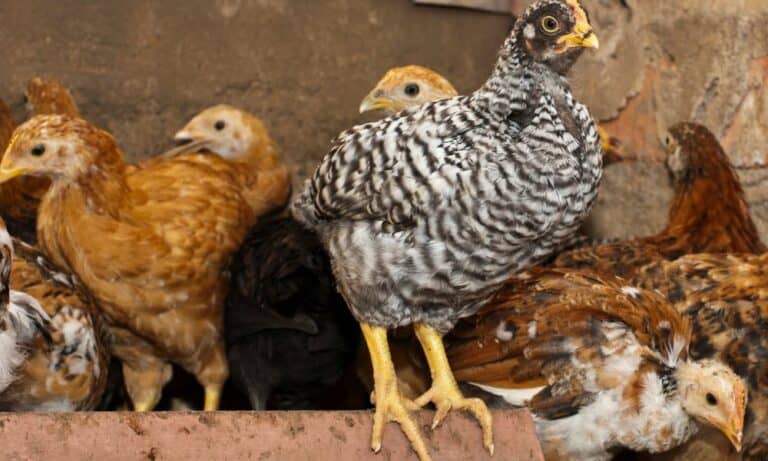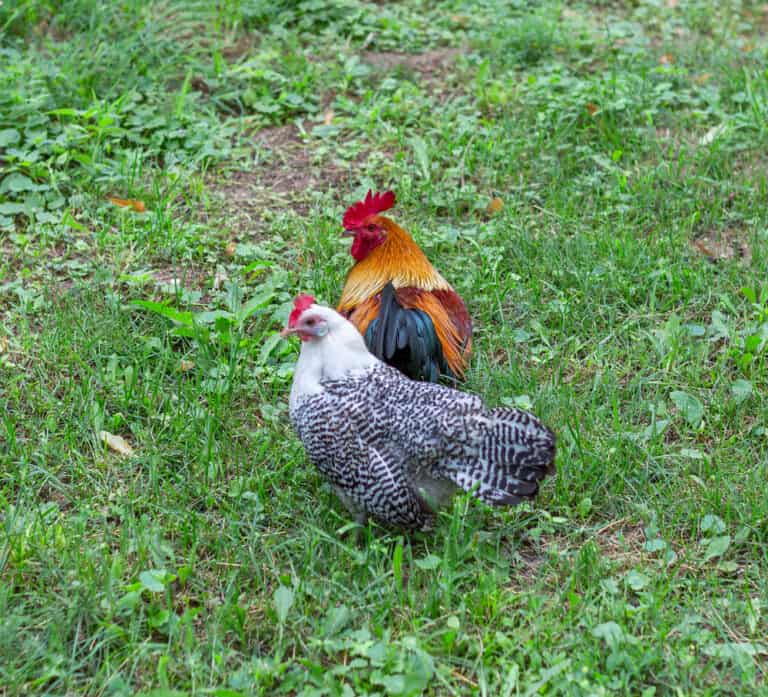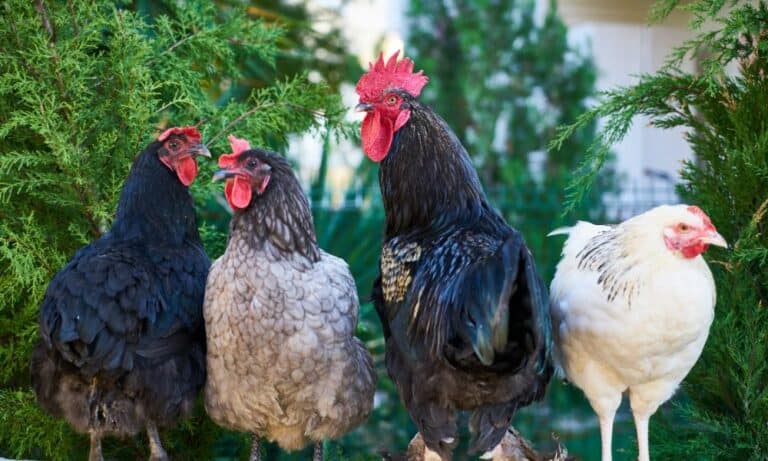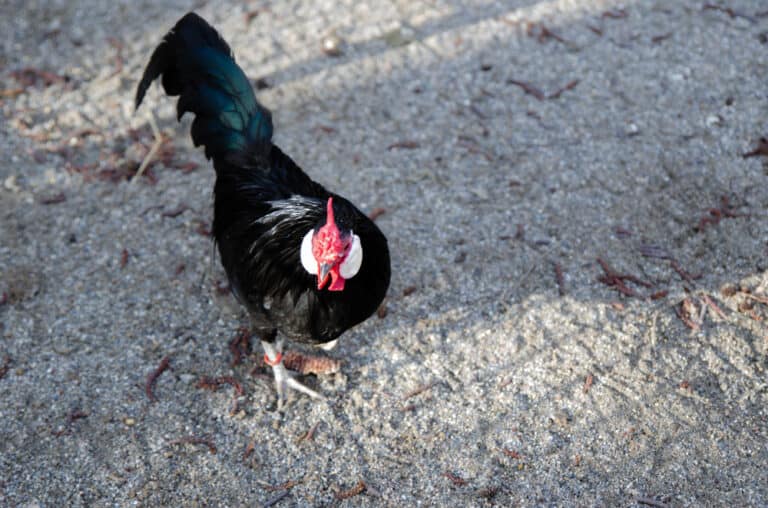In China, they have several breeds classified as black-boned chicken, but Indonesia’s Ayam Cemani takes it to the next level. Ayam means chicken and Cemani means all black. It’s right in the name! And since Ayam Cemani chickens were initially bred for cockfighting, their dark intimidating appearance is a massive part of their appeal. Let’s learn more about this breed.
Identifying Ayam Cemani Chickens
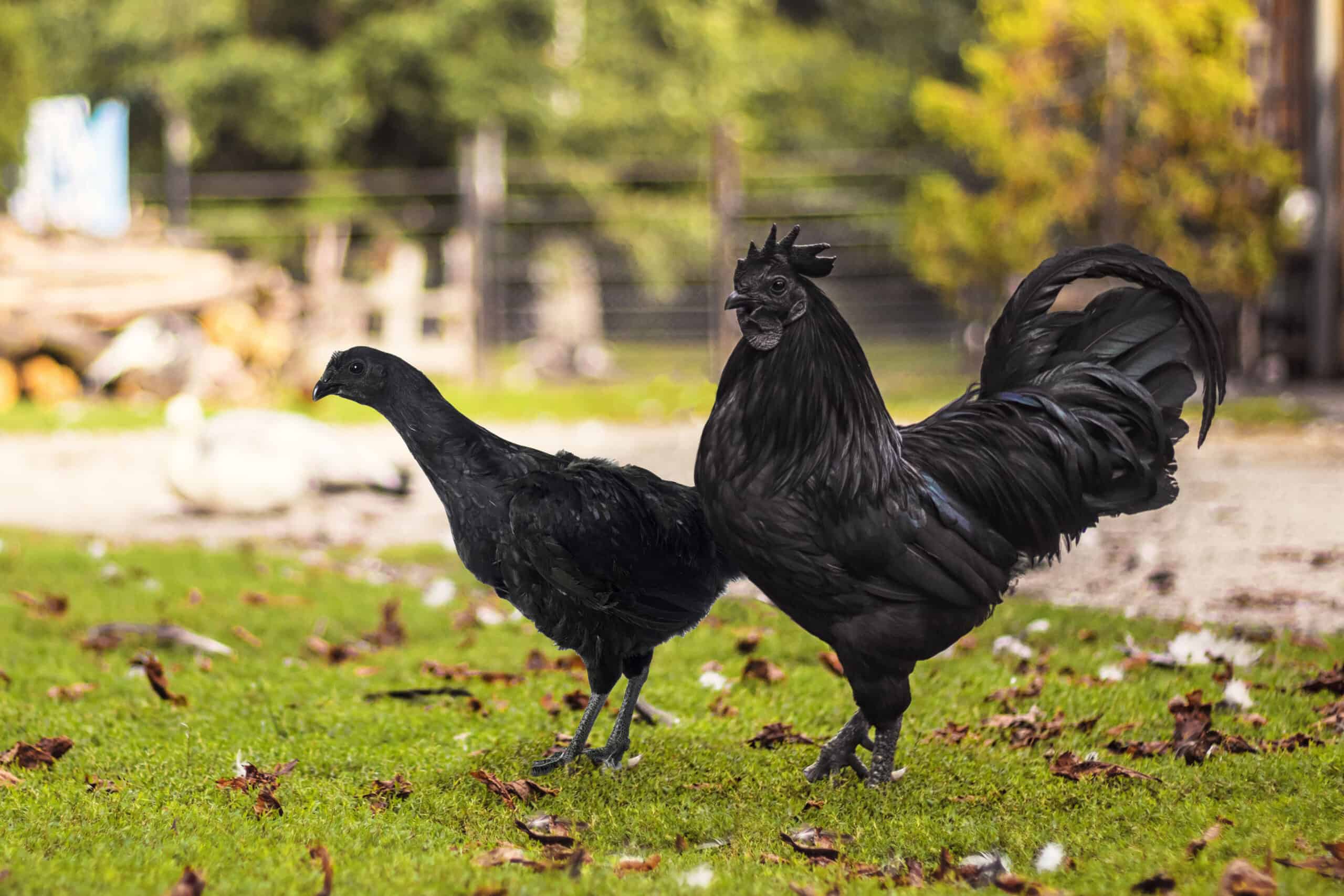
Lots of chicken breeds have rich black feathers that sometimes veer toward glossy greens and blues. But the Ayam Cemani is different. It’s often described as black to the bone because its eyes, earlobes, wattles, feathers, tongue, skin, bones, meat, and internal organs are all black. It has powerful thigh muscles that are perfect for kicking and spurring so it’s a top fighter.
In Bali, Ayam Cemani roosters are prized for this blood sport. It’s barely legal, but Balinese Hinduism practices cockfighting as a religious rite, and many secular capitalists use this blanket protection to promote and continue their gambling enterprise. It’s partly why the Ayam Cemani is so expensive. Recorded sales have gone as high as $5,000 for two chickens.
They’re sometimes called the Lamborghini Chicken, and their traditional function was ritual sacrifice. Their pure black features and rarity made them valuable spiritual symbols. Their blood is said to be enchanted so people rarely eat them. Instead, roosters were made to fight each other before being sacrificed to indigenous deities. But not everyone believes the hype.
The Dark Side of Ayam Cemani
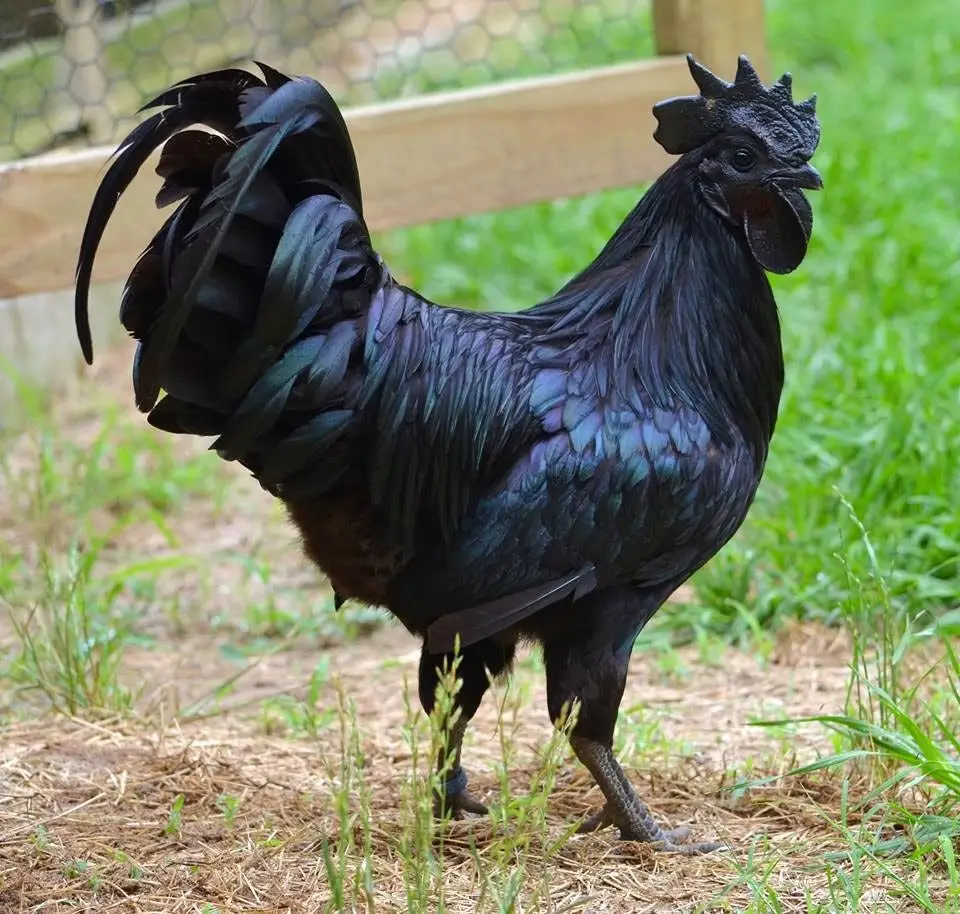
Within Indonesia, Ayam Cemani chickens cost less than $100, even when they’re sold for ritual use. But exporters exploit the hype to sell the birds for anywhere from $199 to $2,500. They’ve even appeared in advertorial spreads wearing pearls and ribbons. Rumors push up the price, so if you claim yours has black blood (which they never do), you can charge more.
Scammers get around this by using squid ink or charcoal to darken the bird’s blood. But even red-blooded Ayam Cemanis are prized for their alleged healing powers. Animist gurus have ceremonies where they offer the blood with other sacrifices to reverse bad luck, cure illness, or communicate with the spirit world. This deep-seated superstition is still widely popular.
When people buy an Ayam Cemani for a sacrifice, they drain the blood and give it to the guru who will chant some secret incantations as part of the ritual. The body is thrown away, so people who aren’t animist believers can collect the back bird, cook it, and serve it with rice. It tastes just like a regular chicken, as long as you don’t mind its black meat and onyx organs.
The color of this chicken is caused by hyperpigmentation or fibromatosis. The breed has a hereditary gene that expresses itself through the bird’s all-black appearance. The word Cemani is Javanese, and the breed originated in Indonesia’s Java Island, which lies between Bali and Sumatra. This chicken is a recent Western arrival, first imported to Europe in 1998.
How Ayam Cemanis Reached the Western World
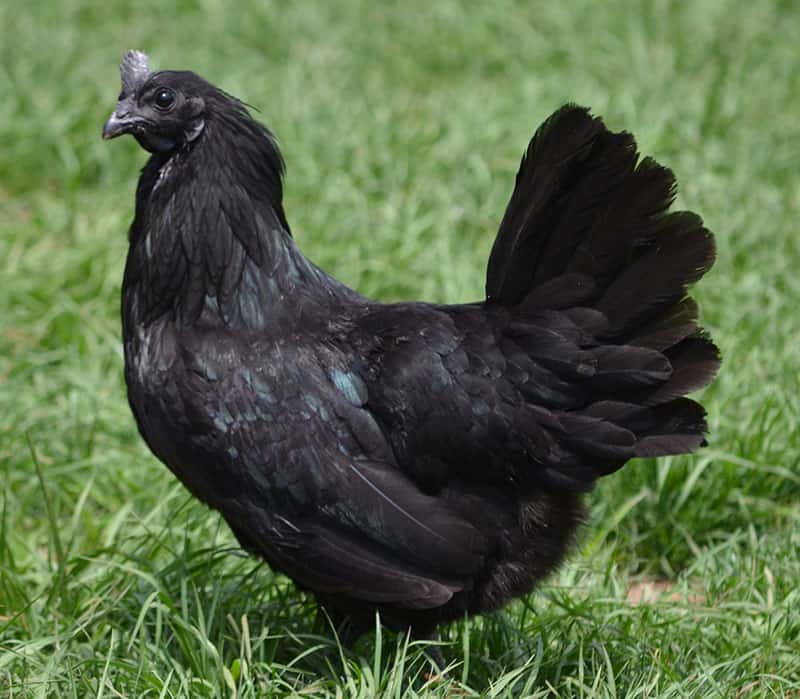
It came via a Dutch breeder named Jan Steverink and has caught on in Belgium, the Czech Republic, Germany, Italy, Slovakia, and Sweden, as well as its original landing point in the Netherlands. It’s used as an ornamental show bird, and one prolific settlement is in Africa, where Jean Kiala-Inkisi, a Belgian-Congolese philanthropist, now raises 250 breeding pairs.
They’re part of AOBA’s preservation program in Kenya and DRC (the African Ornamental Breeders Association). On average, an Ayam Cemani rooster weighs 4.4lb to 5.5lb while hens weigh 3.3lb to 4.4lb. They’re poor layers, only producing 1 egg per week. That’s roughly 80 per year, and since they rarely get broody, other hen breeds (or incubators) hatch their eggs.
Ayami Cemani hens typically lay these eggs in clutches of 20 to 30, with up to six months between laying seasons. The ancestry of Ayam Cemani chickens is thought to include Ayam Bekisar and Kedu breeds. Tame chickens were allegedly crossed with wild jungle birds to get black feathers that have an iridescent green sheen. But both parents need that black gene.
If only the hen or the rooster carries the gene that causes fibromatosis, the chick hatches into a dull black. This may seem counterintuitive, but while chicks with a single gene seem blacker, the absence of the iridescent shine means they’re not considered an all-black bird. For the record, Ayam Cemani eggs are off-white, tan, or cream. Chicken eggs are never black.
Raising Ayam Cemanis in Indonesia
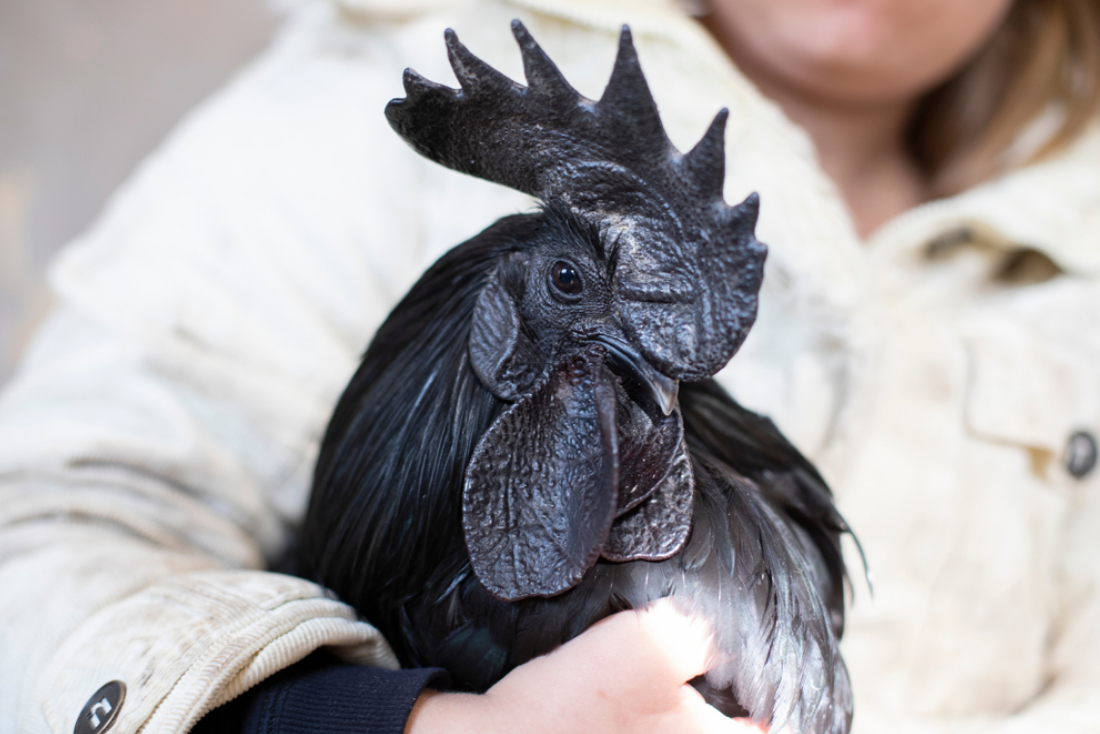
Indonesia is a developing country where Ayam Cemanis have been reared historically. Since they have a spiritual purpose, the chickens are typically treated better than other breeds. A farmer might raise a dozen hens with one rooster in a bamboo coop. We’ve noted that the hens aren’t broody, so other hen breeds like silkies are given the eggs to hatch and raise.
The color and mysticism of Ayam Cemanis freak some people out, including kids, so they may have a designated caretaker that’s less superstitious. And because the birds are so prized they might get a special diet of rice, corn, and fish whereas other chickens get plain rice with a few kitchen scraps. We hinted that the powerful thighs of these birds are good for fighting.
So the caretaker is wary not to arouse their aggressive tendencies. It’s best to start handling them as soon as they hatch so they get used to human touch. It’s also helpful to approach them slowly and warily. Be gentle and avoid stress factors like predatory pets and loud noise. The eggs of these chickens are relatively rare and large considering the size of their mothers.
One egg averages 45g or 1.6oz aka Size 6. As with other breeds, older hens lay larger eggs. The breed can live for 6 to 8 years but will only lay for the first 3 or 4. Their meat is tough and sinewy due to their ample muscle, but since hardly anybody eats them, they’re mainly ornamental companion animals and good luck charms that are sometimes sold for rituals.
Rearing Ayam Cemanis in the West
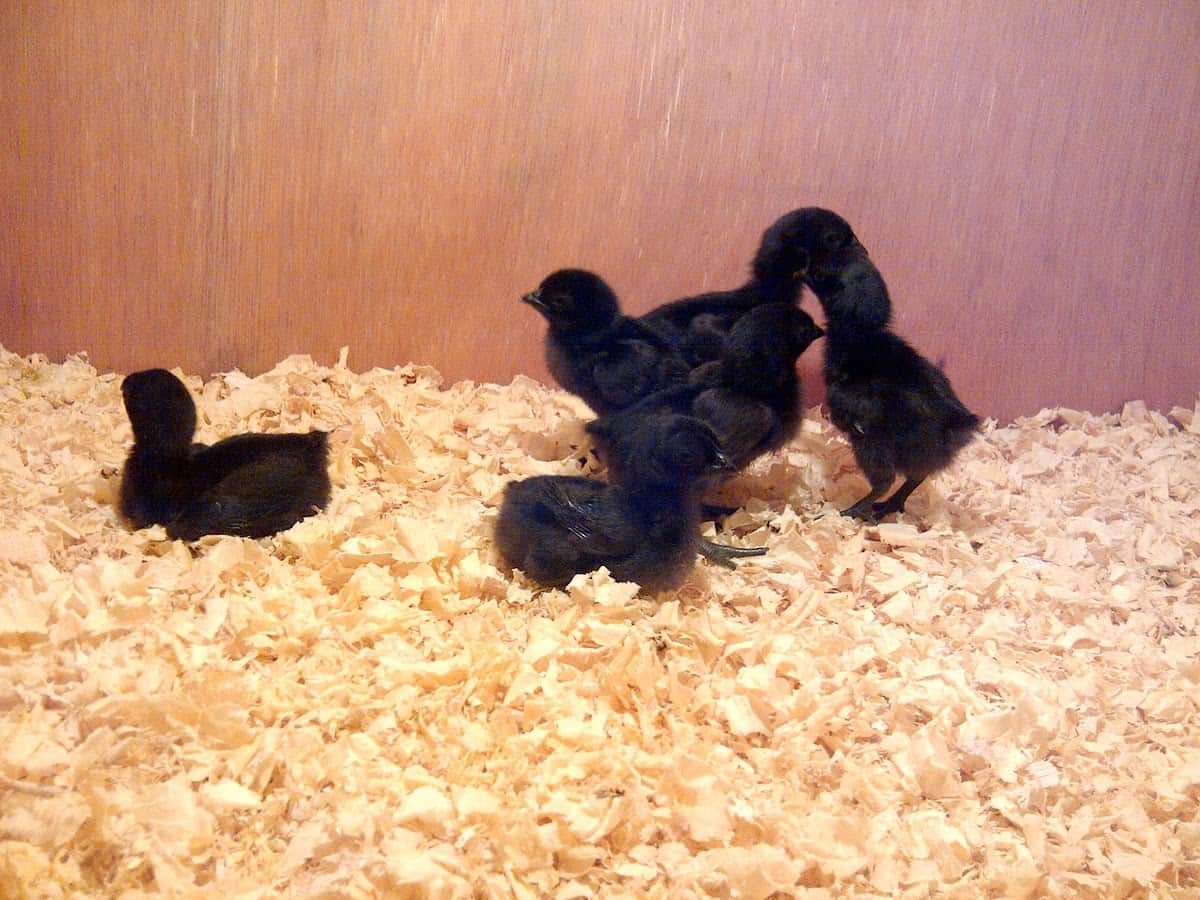
Apart from their glossy greenish-black feathers and inky body parts, these ebony birds have a single black comb. And while their blood is always red, it tends to flow in a darker shade than other chicken breeds. North Americans are working hard to keep the breed pure, but chicks sometimes hatch with greying mouths or white splashes on their toes, chests, and wing tips.
A few Ayam Cemani babies hatch as silver chickens instead of black ones. These variations prevent the American Poultry Association from accepting it as a heritage bird. But many people claim it’s the rarest (and most expensive) chicken breed in the world. Because it’s thought to have jungle fowl strains in its DNA, the Ayam Cemani has a mildly gamey taste.
It also has leaner, longer muscles and limbs than domestic chicken breeds. Its naturally sharp spurs are the reason it’s favored for (illegal) cockfighting, and its lustrous black feathers could be ideal for showing. It’s not a regular at chicken shows yet because the breed standard hasn’t been established. Ayam Cemani hens are typically calmer than the roosters.
Because these birds have such a uniform color and skin tone, it’s hard to tell the sex of the younger ones. It gets clearer once they reach puberty because roosters have a larger comb and wattles. Another interesting factor is their heat tolerance. You might think their black shade makes them uncomfortable in heat. But they originate in the tropics so they’re fine.
Raising Ayam Cemanis in Africa
AOBA’s stated mission is to preserve the purity and longevity of Ayam Cemanis and other rare chicken breeds, so they have strict rules regarding sale and propagation. According to their website, they never ship eggs except to West Africa and they never sell birds or eggs to North Africa. In Eastern, Central, and Southern Africa, you can only buy chicken, not eggs.
When you want to buy Ayam Cemanis from them, you have to purchase an adult breeding pair or trio because the plan is to proliferate the chickens and increase their population. Especially since we know Ayam Cenami hens are terrible brooders, setters, and hatchers. This is why AOBA keeps detailed records on the breeding lines and histories of all their birds.
To buy these birds, you have to be a member of AOBA and participate in an auction. You also have to pick up your birds in person, which is likely to involve thorough vetting to avoid bird trafficking. This is a recent enterprise since Jean Kiala-Inkisi only launched AOBA in 2019. In 2020, it cut its teeth, initiating an International Stud Book for Djallonké Goat & Sheep.
Currently, AOBA has over 250 breeding pairs that can be reliably traced to bloodlines in Belgium and the Netherlands as well as authenticated Indonesian lineages in Bali and West Java. Their birds reach reproductive age at 5 to 6 months and are fed corn, rice, beans, bugs, grass, and other seeds. The program socializes Ayam Cemanis to be friendly and fun.
Ayam Cemanis in the Winter
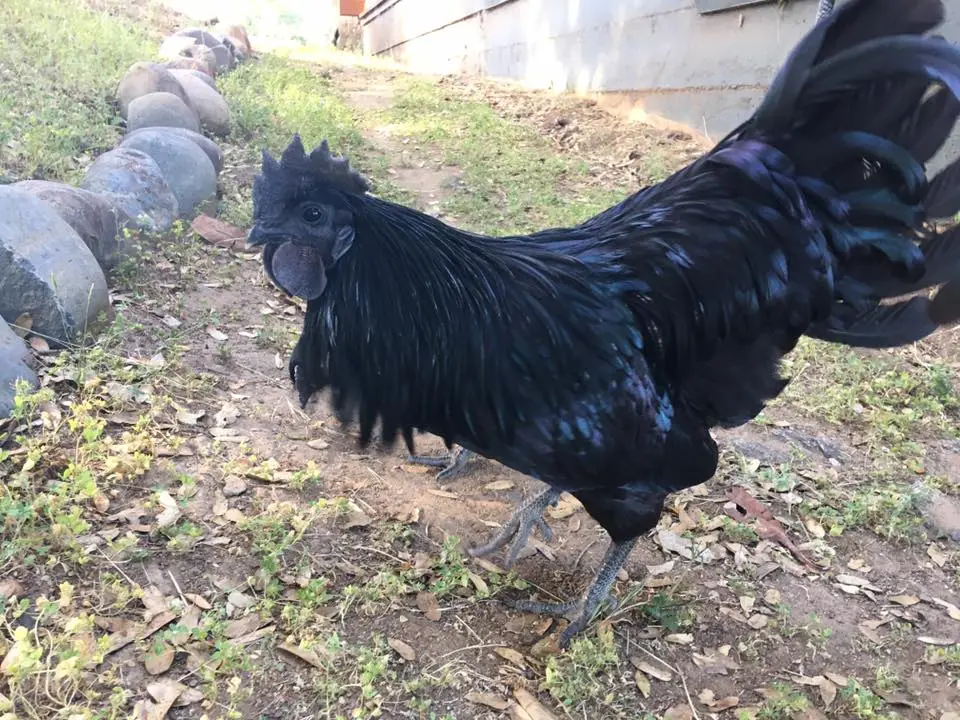
You’ll have noticed this breed thrives in tropical climates and equatorial regions. They’re suited to warm, wet weather, so they don’t do as well in snowy conditions and extreme cold. You can still raise them but consider using heat lamps and insulation during the winter months. Ayam Cemanis can be especially susceptible to frostbite on their combs and wattles.
You can apply a salve like Bag Balm or Vaseline directly on the wattle and comb. Check their housing and seal any gaps that may let cool drafts and moisture into the coop. Ventilation flaps are a good idea because you can slide them shut when it gets too cold. Position them toward the top of the coop to maximize warmth while optimizing airflow and circulation.
As an aside, Ayam Cemanis have several advantages over predators. Their lean limbs let them jump further and flap higher so they can roost in safer spots. Their dark coloration also offers heightened camouflage at night. Plus, being born fighters, they can effectively defend themselves when needed. But you still need raised wire flooring to deter burrowers.
Health Issues in Ayami Cemanis
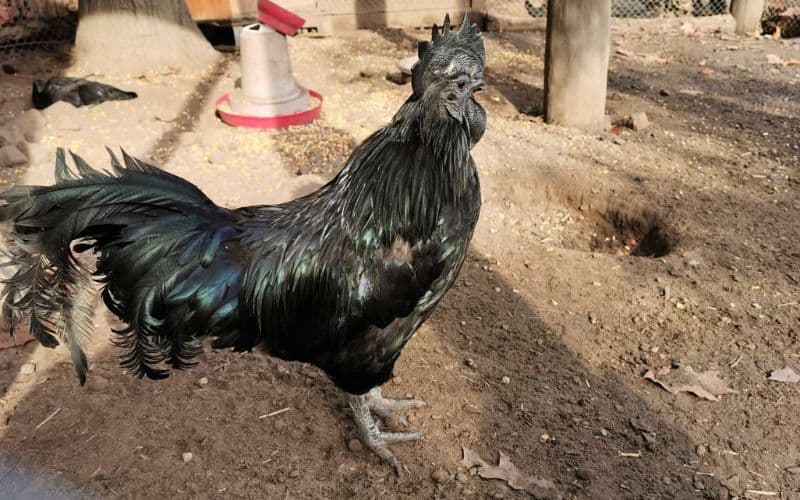
Ayami Cemani roosters have a relatively high tail and their combs have 3, 5, or 7 points. On both hens and roosters, the feathers are flat, giving the bird a luxe streamlined appearance. Their feet are black as well, and these birds are rather hardy with low susceptibility to illness. They can get gout, blackhead, or parasites, though. Spot checks help to detect common pests.
Like all chickens, they molt for 8 to 16 weeks starting in the fall. This happens with tropical birds as well because even in equatorial countries, daylight hours get shorter before the cold months. Molting is when birds shed their feathers and regrow new, healthier ones. But it’s dictated by the seasons and the number of daylight hours, not by specific calendar months.
This is important to know because winter in the southern hemisphere is summer in the northern hemisphere and vice versa. So if you move your chickens to a different climatic region, they might molt in a different month. It’ll still happen in the fall though, and chickens don’t lay eggs while they’re molting. Maintain their high protein diet and they’ll soon re-feather.
On the other hand, if your chickens have bald patches on their bodies or raised scales on their legs and it’s not molting season, they might have lice, mites, or other parasites. Talk to your vet and get them some anti-pest medication. And if the chickens have trouble breathing, they might have worms, respiratory infections, or even chocolate poisoning, so call your vet.
A Parting Shot on Ayami Cemanis
This beautiful breed is showy but is unlikely to cuddle or sit on your lap. They’re not ideal for beginners because they’re active, alert, and potentially skittish, so it’s best to free-range them and offer lots of space. If you want a purebred bird, go to trusted breeders like AOBA. Do you know any other trivia about Ayam Cemani chickens? Tell us in the comment section below!

